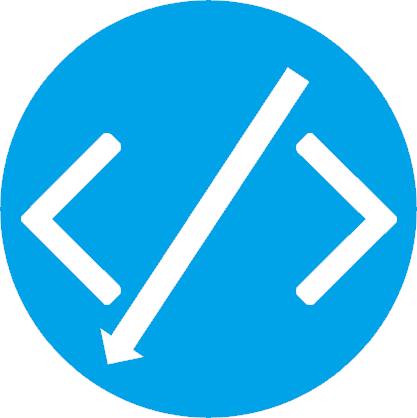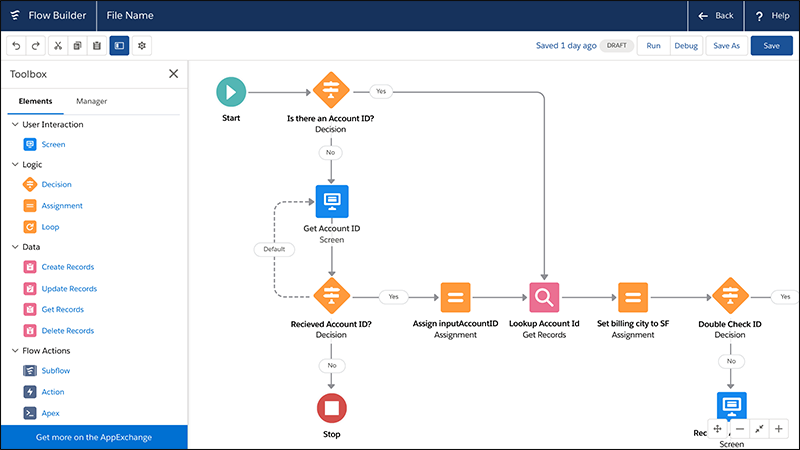Great News On Selecting Low-Code Platform Info
Great News On Selecting Low-Code Platform Info
Blog Article
Benefits Of Low-Code Application Development In Terms Of Speed
Visual Development Environment :
Drag-and-Drop Interfaces: Low-code platforms provide visual tools for designing applications. Developers can build an application by dragging and dropping elements without writing code.
Pre-built components and templates Low-code platforms have pre-built components and templates, which allow developers to rapidly prototype and build applications.
Reduction of Coding Requirements
Automated Code Generation: The low-code platform generates the code underneath based upon the visual models that developers create. This eliminates the requirement for manual coding and speeds up the development process.
Reusable components: Developers can to utilize reusable components across multiple projects, which reduces the time they're spending creating and evaluating code.
Collaboration streamlined:
Low-code platform tools often include versions control, testing, or deployment. This enables seamless collaboration between teams.
Development by citizens: Using simple interfaces and decreasing bottlenecks that are often caused by insufficient availability of developers, business users and other users can help in the development of applications.
Rapid Iteration and Prototyping
Fast prototyping: Developers can create prototypes in a short time to validate ideas and collect feedback. This leads to less time spent on iterations.
Simple Modifications. Low-code development's visual nature makes it easy for users to modify and update their software.
Pre-built Integrations:
API Integrations. Many low-code platforms include connectors designed for the most the most popular APIs and other services. This can speed up the process of integrating systems.
Data integration tools: Tools to integrate data are integrated to make it easier for the process.
Deployment Scaling
One-Click Deployment: A lot of low-code platforms offer the option of deploying with one click, drastically reducing the time and effort required to deploy apps.
Cloud-based Solutions: Cloud platforms with low-code allow developers to concentrate on the logic and functionality of their apps instead of worrying about the logistics of deployment.
Low-code development of applications is a faster way to create apps. It simplifies and automates many aspects of the procedure. This makes it easier to speed up delivery and adapting to evolving requirements. Have a look at the most popular extra resources on Low-code Platform for application development for site tips including no code platforms, application development platforms, rad development, application development platforms, app modernisation, software for app development, cross platform mobile development, software for app development, push notifications, multiplatform mobile app development and more.
The Low-Cost Of Development Is Among The Major Benefits.
Low-code development has many benefits in terms of cost-effectiveness. This makes it a good option for companies who want to maximize their development budgets, while still providing top quality software. Here are a few of the main benefits:
A lower code platform eliminates the need for lengthy manual coding. This saves time and effort on the part of developers in creating applications. This means less labor costs.
A smaller number of developer resources: As low-code development is quicker and easier, fewer developers are required. It could reduce hiring and staffing costs.
More Time to Market
Accelerated Development Cycle: The visual development tools and pre-built components provided by low-code platforms facilitate rapid application development, allowing companies to get their products on market quicker. This can result in quicker revenues and better standing in the market.
Rapid Prototyping. Businesses can test quickly and develop prototypes. This cuts down time during the development phase, and permits quicker iterations built on feedback from users.
Reduced Maintenance Costs
The modular architecture and standardized components of applications built on low-code platforms make them easy to maintain. It reduces the cost of maintenance and support.
Automated Updates: Many low-code software platforms manage patches and updates in a way that is automatic and ensure that applications are secure and up-to-date without requiring large manual intervention.
Efficient Resource Utilization:
Low-code platforms empower businesses and other non-developers to take part in the process of development. This democratization allows businesses to use the skills of many employees, and lessen the dependence on high-paying programmers.
Utilizing IT resources efficiently IT teams can focus on strategic projects instead of being bogged with routine work on development, thereby increasing the efficiency of their teams and productivity overall.
Scalable Pricing Models
Subscription-Based Pricing: A lot of low-code platforms provide flexible subscription-based pricing that scales depending on the amount of usage. This allows businesses the ability to adjust their spending in line with the growth of their business and its needs without having to pay large upfront costs.
Pay-as-you-go: Certain platforms offer pay-as you-go options. This lets businesses only pay for resources they actually use. This is particularly beneficial for startups and small-sized businesses with a limited budget.
Reduced Third-Party Software Costs:
Built-in Functionalities : Low-code platform often comes with built-in functionality and integrations, which eliminates the need for extra third-party software, tools, and licenses.
Pre-Built integrations: These pre-built systems and services integrate with popular services, which eliminates the requirement for custom-designed software, and can save time and money.
Better ROI
Faster Return on Invest Rapid development: By combining lower costs and a faster time to market, businesses can achieve an increased ROI on their investment (ROI).
Increased agility. Businesses can adapt quickly to the ever-changing market conditions and customer requirements. This will help them remain relevant, and will be able to profit from any new opportunities.
Training costs are less:
Low-Code Platforms have User-Friendly Interfaces. The simple and user-friendly interfaces cut down on the learning curve of new users. This minimizes the need for intense training programs.
Accessible Resources: Many low-code platforms offer comprehensive training materials and tutorials along with community support. These tools reduce the requirement for formal instruction and the associated costs.
Streamlined Collaboration:
Enhance Collaboration Tool The built-in collaboration tool facilitates better collaboration and communication between team members. This results in better development processes and reduces project overhead.
Unified Development Environment. An unified development platform can help reduce expenses and improve workflows by reducing the complexities of managing various tools.
Overall, the cost effectiveness of low-code software development is due to its capability to lower maintenance and development costs as well as increase the time to market and optimize the use of resources and provide flexible price models. These elements provide huge financial rewards to businesses. Low-code development is an excellent choice for organizations that want to increase budgets while still being able to build robust, scalable, and top-quality software. Have a look at the most popular Enterprise application development with Low-code Platform for site tips including lowcode no code, develop cross platform mobile app, application modernisation, app development platform, build a docker container, paas service, rad application development, app dev platform, no code platforms, application modernization software and more.
Community And Support From The Vendor Are Two Of The Advantages Of Low Code Application Development.
Low-code platform development provides significant advantages, including vendor support and community. This is essential in ensuring successful application development along with ongoing maintenance and continual improvement. Here are a few of the major benefits: Support from vendors
Comprehensive Technical Support:
Support Teams with Dedicated Support: Many low-code platforms provide access to dedicated support teams that can assist with technical issues, troubleshooting, and provide guidance to ensure that any problems are resolved promptly.
24/7 Support Availability: Some vendors offer around-the-clock support that is especially beneficial for businesses that operate globally and in various time zones.
Training and Onboarding
Vendors offer structured learning programs such as webinars, tutorials, and certificates to help users get familiar with the platform.
Customized Onboarding : Many vendors offer customized onboarding services that assist new customers install the platform and modify it according to their specific requirements.
Regular Updates and Enhancements
Continuous Improvement : Low-code platform providers often release periodic upgrades that add new functionality as well as performance improvements and security patches. These updates make sure that their platform remains current and secure.
Feedback Integration Vendors incorporate customer feedback into the process of development to ensure that the platform changes in response to the changing requirements.
Comprehensive Documentation:
Documentation is comprehensive: Users are usually able to access a wealth of well-organized documents, which range in terms of complexity from basic modification to advanced.
API References API documentation provides complete API references that can help developers integrate their low-code platform applications with other systems.
Professional and Consulting Services
Expert Consultation: The majority of vendors provide consulting services for strategic planning, architecture and complex implementations. This assists users to make the most of their platform's potential.
Custom Development Service: A few vendors will offer custom development services to create features or integrations for their customers that are not easily accessible.
Community Support
Active User Groups:
Forums and Discussion Panels A lot of Low-code platforms offer lively online communities, where users can ask questions, share solutions, and work with one another on the best methods.
User Groups & Meetups Virtual or local user groups and meetings provide opportunities for learning, networking and sharing knowledge.
Knowledge Sharing and Collaboration:
Community-Contributed Resources: Users often share templates, modules, and extensions that they have developed, which can be reused or adapted by others, accelerating development and innovation.
Crowdsourced Solution Finding: The collective experience and wisdom of a group can be a valuable resource in solving difficult problems.
Learning and Development
Community-Led Learning: Many communities hold workshops, training sessions and webinars that are often run by experienced users who are able to provide insight and techniques that are more advanced.
Online Tutorials and Courses Community members regularly make and share online courses, tutorials and guides on how-to, which enhance the resources for learning available to all users.
Feedback and Influence:
Community Forums for Product Feedback offer a variety of channels for providing feedback to vendors. This will help in the development of features.
Beta Testing Programs: Members of the community who are active may have the opportunity to participate in beta testing programs, giving them early access to new features as well as a say in determining the future of the platform.
Recognition and support:
Many vendors have communities recognition programs for example MVP programs (Most Valuable Professional), to recognize the contributions of members who are involved in their communities.
Peer support: Community members will often offer peer-support, offering their expertise and assistance to those who may be less experienced. They help create a supportive environment by fostering cooperation and creating a positive atmosphere.
Overall, the combination of a robust vendor and active, engaged communities that provide a complete environment for the assistance with low-code development of applications. The developers will have the expertise and resources they need to build and deploy their application.